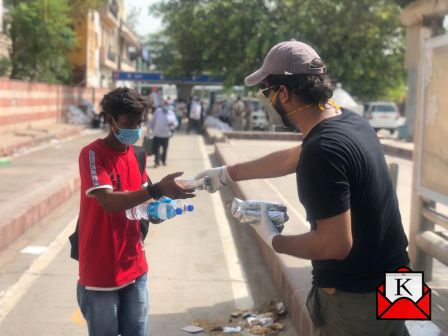Guest Blog-Why India Failed To Control The Rising Cases of Covid-19?


India is the World’s 7th largest country with a total area of 3,287,263 square kilometers and the world’s 2nd largest country in terms of population with 135 million inhabitants and a population density of 462 people per Kilometer square.
The first case of Covid-19 in India was reported on 30th January 2020 and it took about 2 months for the Government to realize the gravity of the situation and the complete lockdown of 21 days was imposed by the government on 24-25 March 2020. The cases were rising but in a controlled manner. There was a fear of pandemic in those days and people were obeying Government guidelines. The outbreak was limited to the metropolitan cities and the maximum number of cases was those with international travel history and the contact tracing and containment was easy as there were a limited number of cases.
The strategic importance of the lockdown
This was the first time in Indian history that a strict lockdown was imposed. We as a nation were not prepared to deal with a situation like Covid-19. Our medical facilities were unequipped to cater to 135 million citizens. Also, the number of ventilators and personal protective equipment in India were not adequate enough to cope with the sudden surge in demand. There is an English saying “where there is a will, there is a way” and the Indian response to this dire and potentially catastrophic situation personifies this saying. We witnessed India coming together as a nation and turning this impending pandemic into an economic opportunity. We hardly had any company, who was manufacturing PPE kits; you’ll be amazed to know that we became of the exporters in a very short span of time.
The lockdown bought us the time to prepare for the pandemic also to spread the awareness of medical advice so that the people could keep themselves safe and minimize the infection.
The government played a significant role and was able to control the situation to some extent. It was the collective effort of the Government and non-government organizations, I must say.
After a spell of extended lockdown economic factors forced the government to gradually lift the lockdown. There was a brief period when the downward trend was observed in cases in metropolitan areas but at the same time there was significant growth in a number of cases in the rural areas. But after some time there was a gradual increase is in metropolitan cities as well in early September. It has been noticed that the Cases in Delhi NCR are growing at a high pace. Why? According to me, the cultural differences and the lack of patience and education is the main reason for the rising number of cases. The fear of pandemic is not there anymore as the initial fear factor has worn off and people have been inoculated owing to the wall to wall coverage of the pandemic in newspaper, TV, radio, and online platforms. People are not obeying any kind of guidelines. The majority of the people are wearing masks because of Government mandate. Personal safety and other wellbeing is not main the reason that people wear masks these days. Social distancing is still a luxury we can think of. Even the educated population is not following social distancing. The government had to impose unlock, as the economy and trade were going down, they had no options other than unlocking. This casual and reckless behavior of citizens can lead us to a worse than we can imagine. India may cross 1cr cases at the end of October.
There is also an issue of the accuracy of the COVID case count. The number of tests being conducted is still low compared to other developed countries and so we may have a large chunk of the population that is infected. We need to increase testing and perform robust tracing to track and minimize the spread. Although it may already be too late because tracing is effective when the infected count is manageable beyond a certain critical threshold the options are either an effective vaccine or herd immunity.
Quite a few vaccines are being tested in different stages currently and it is hoped that we may have a viable vaccine by the end of 2019. But even then there is a question of logistics involving the production, distribution, and vaccination of the population. It will take around 6-7 months for this to happen and so as per Dr. Fauchi (US infectious disease control expert). We may be looking at some time in September 2020 when we could go back to a semblance of what used to be normal before.
Our safety is in our hands, I request fellow citizens to obey Government Guidelines, to stay indoors and only venture outside if it is unavoidable and religiously follow all the precautionary measures. Bear in mind that your best friends, your colleagues, your relatives are not immune. They could be asymptomatic carriers and could easily infect you and your family. In the meanwhile, we continue our fight with the pandemic.
About the author- Omankit Juneja, Volunteer Supervisor – COVID Relief Team Gurugram
